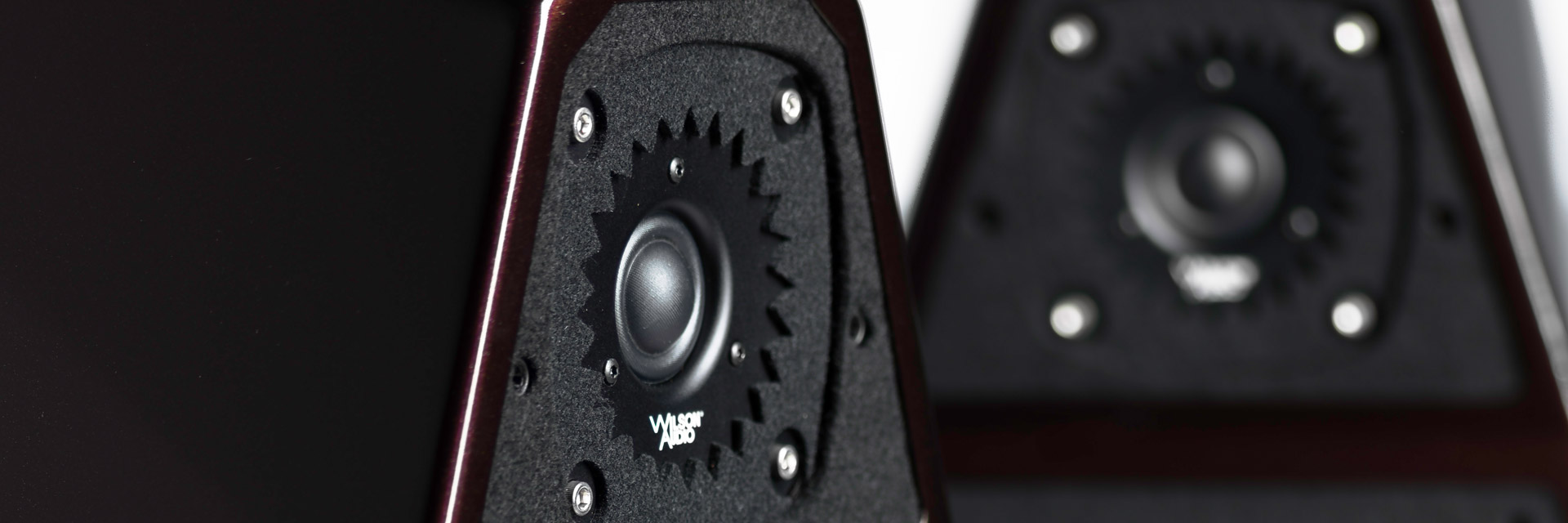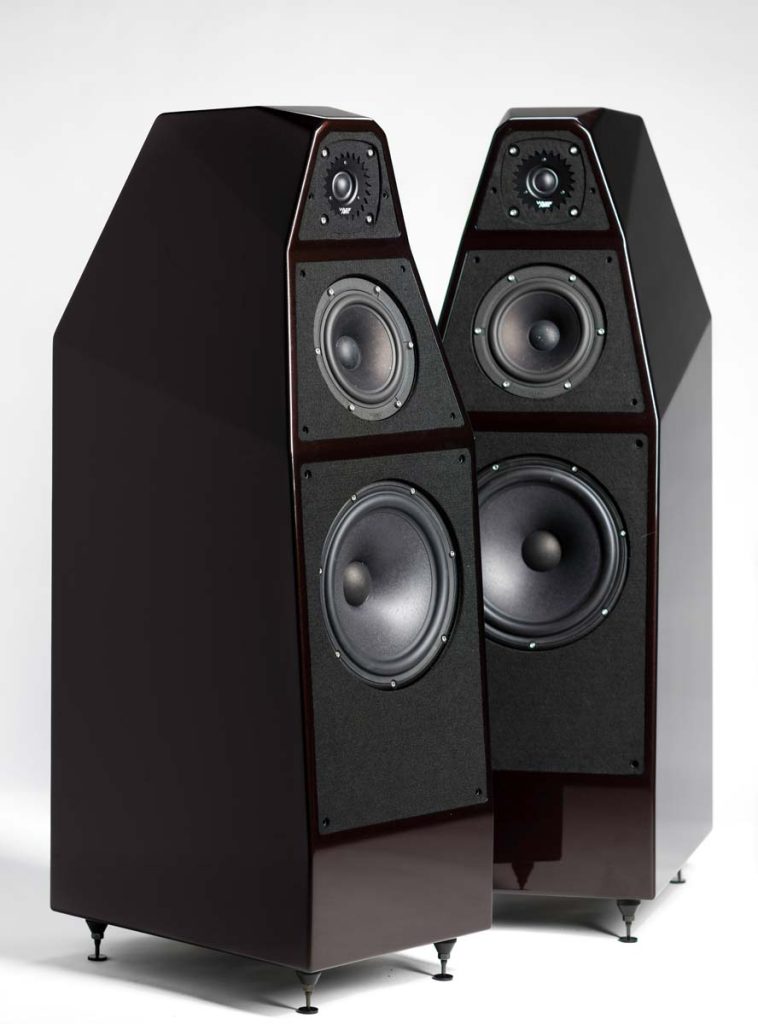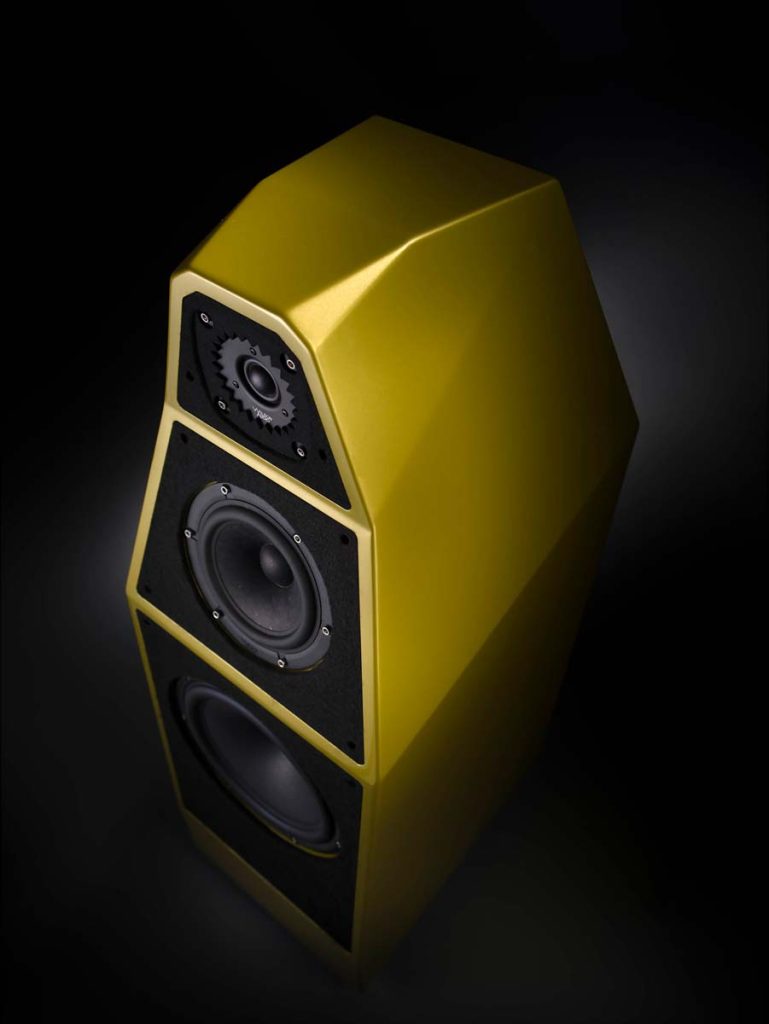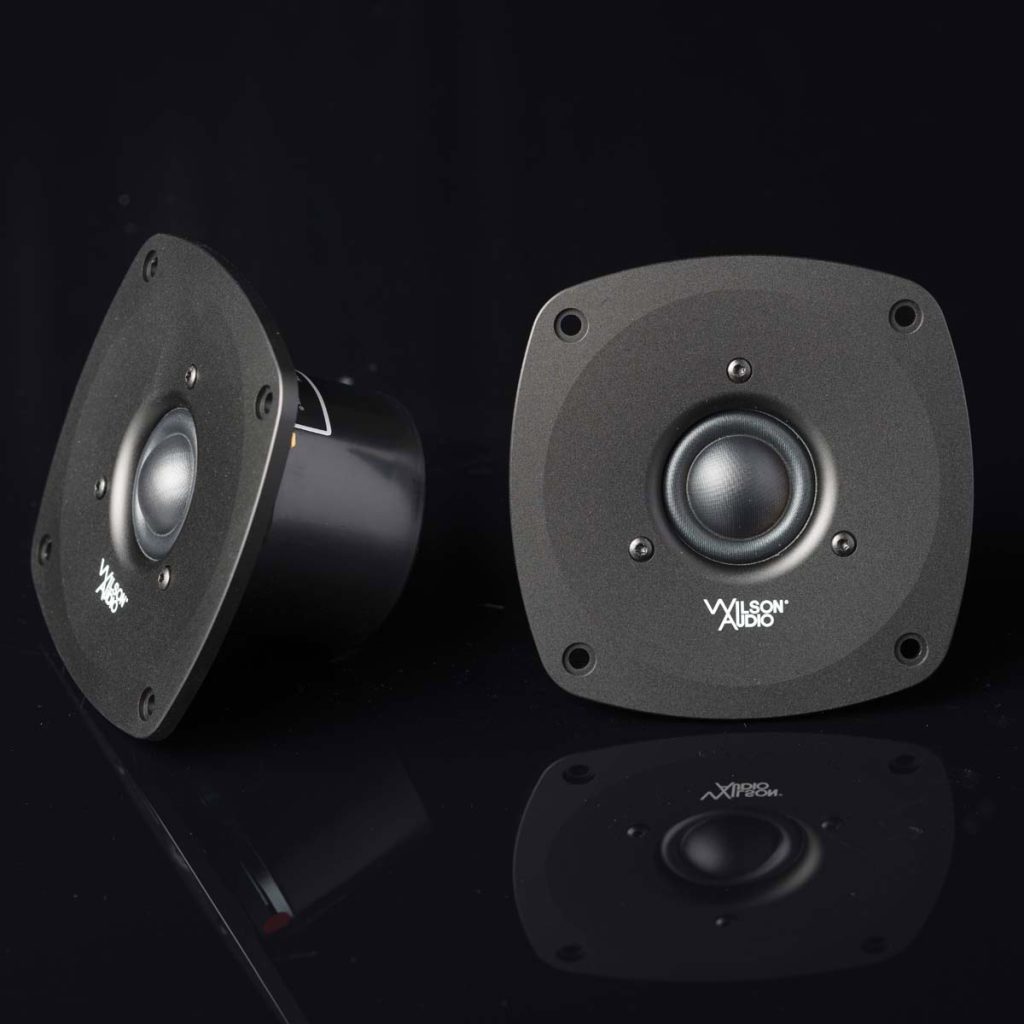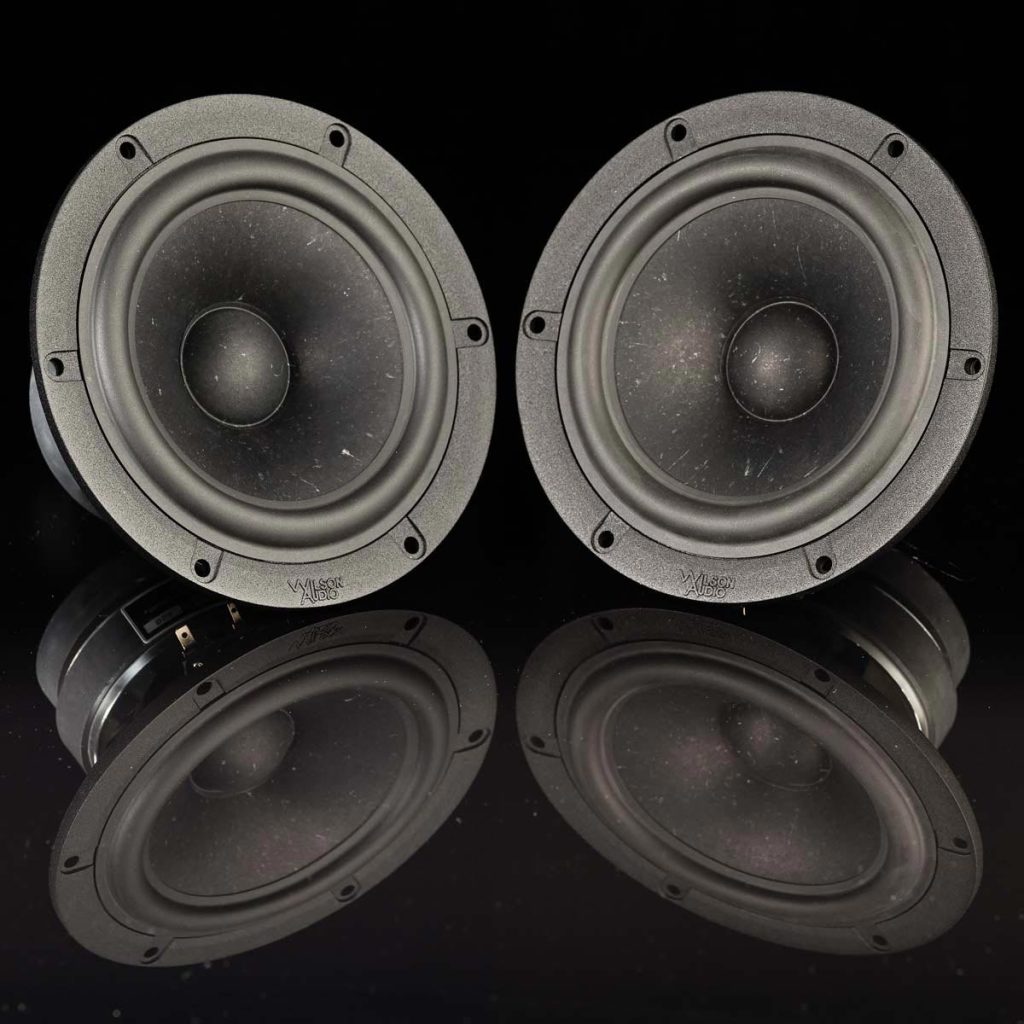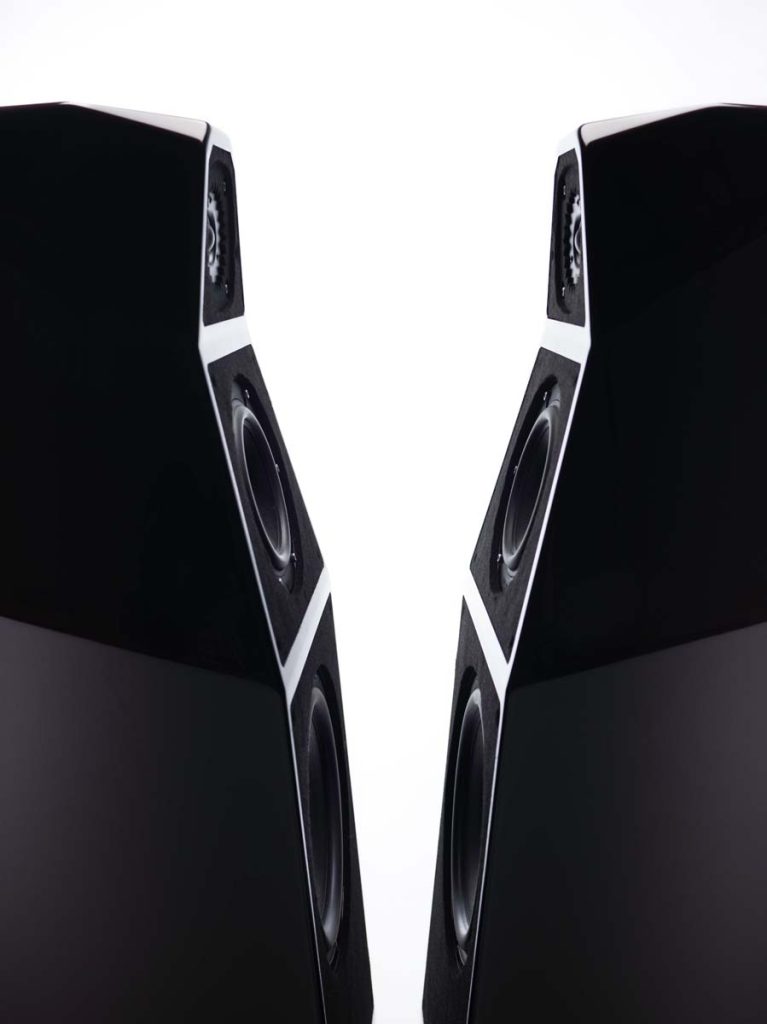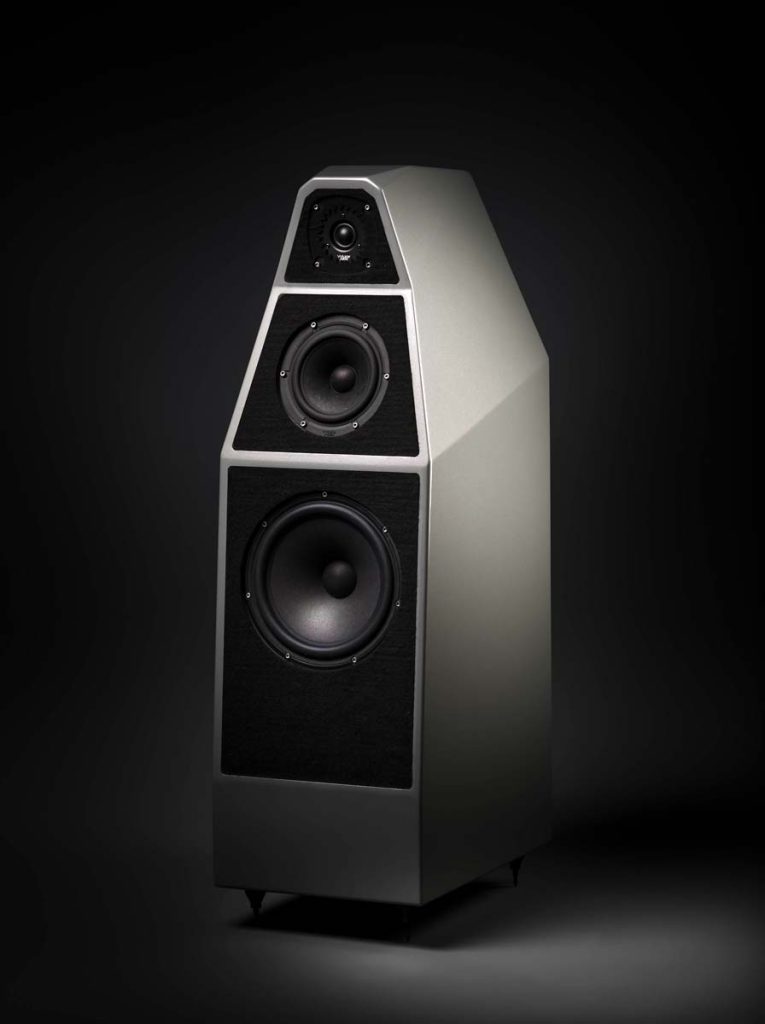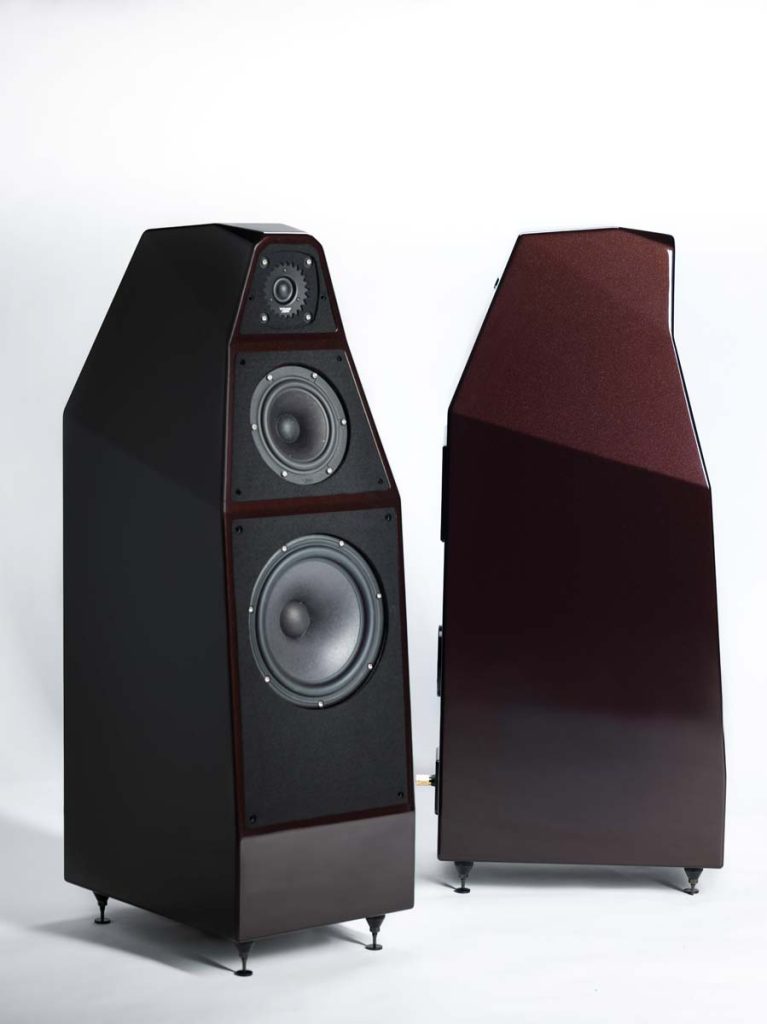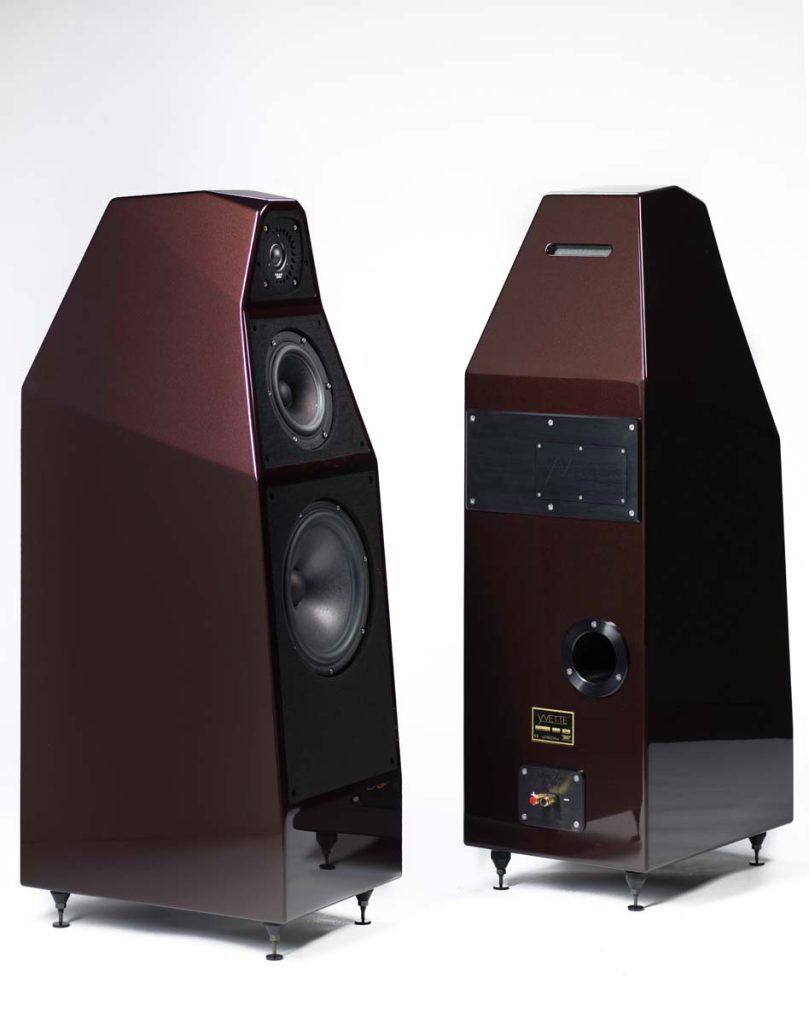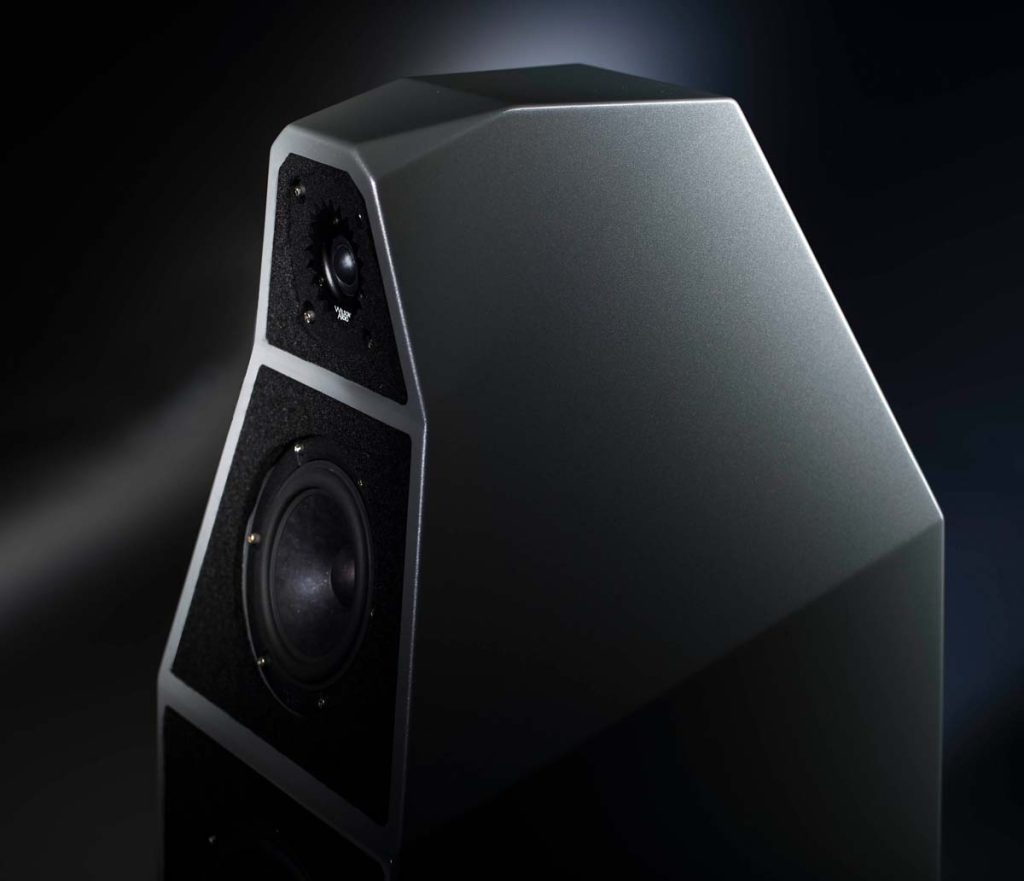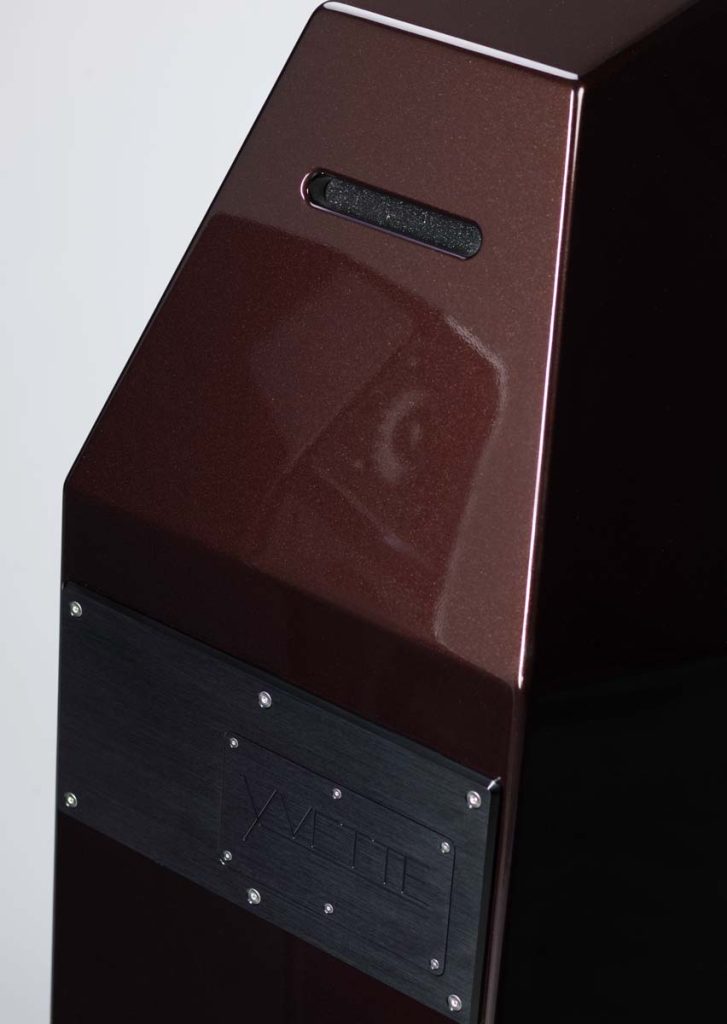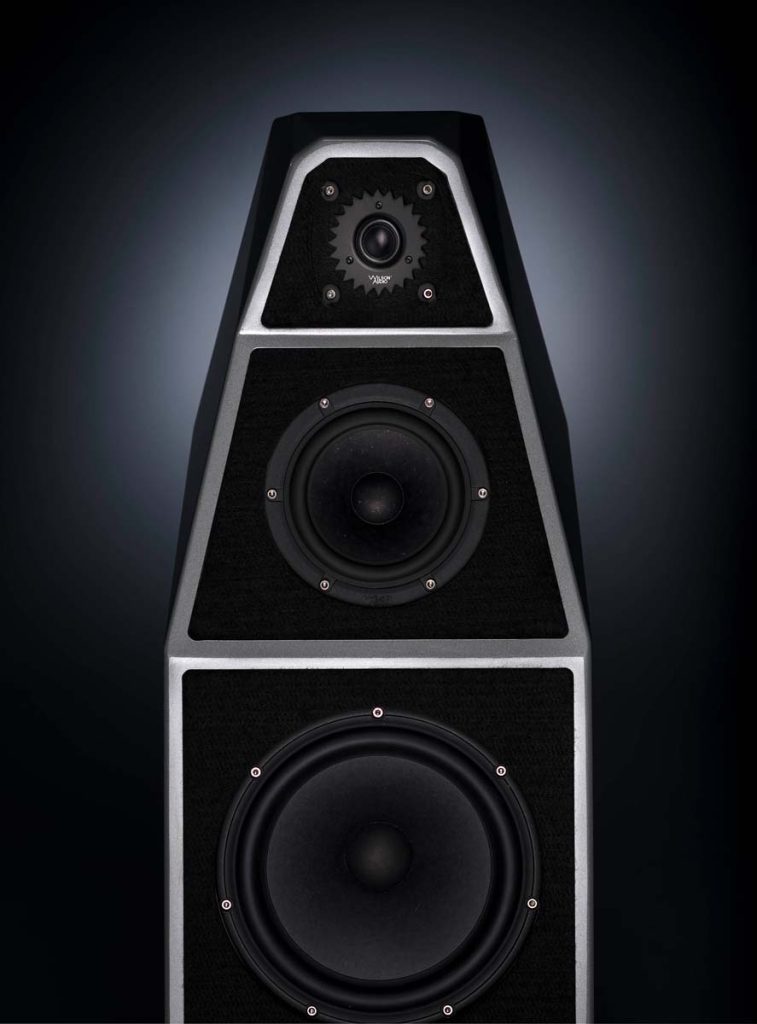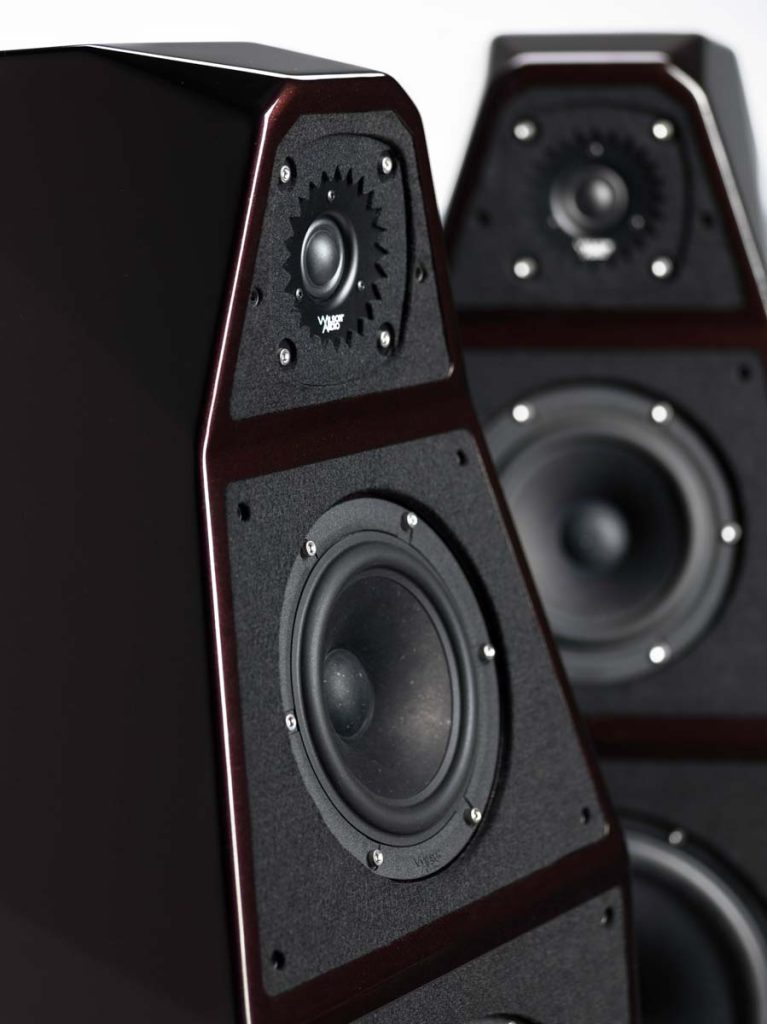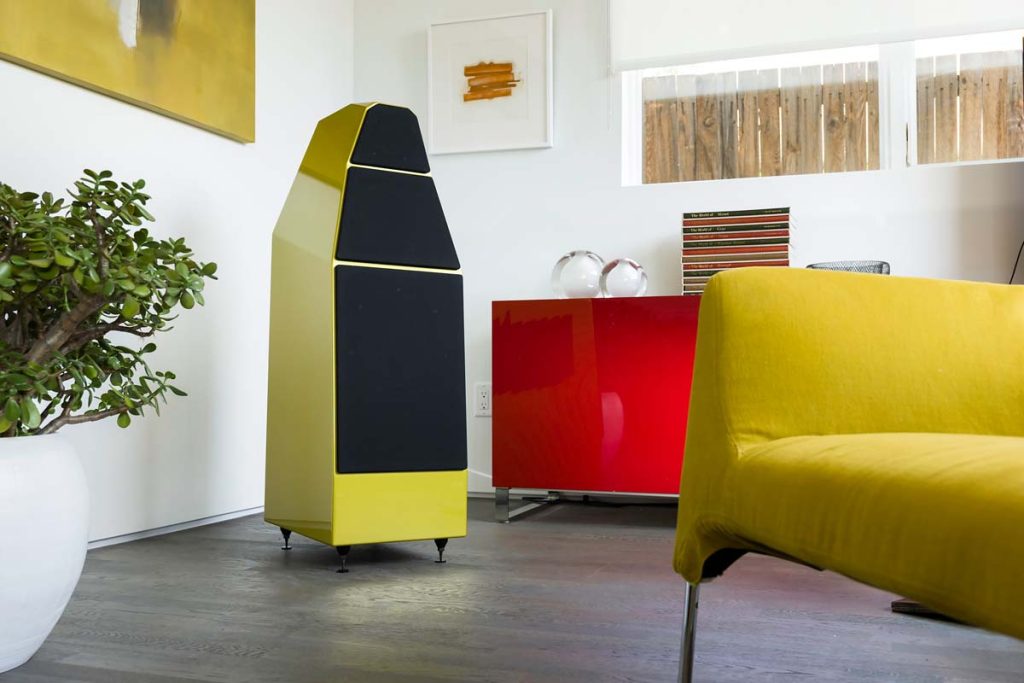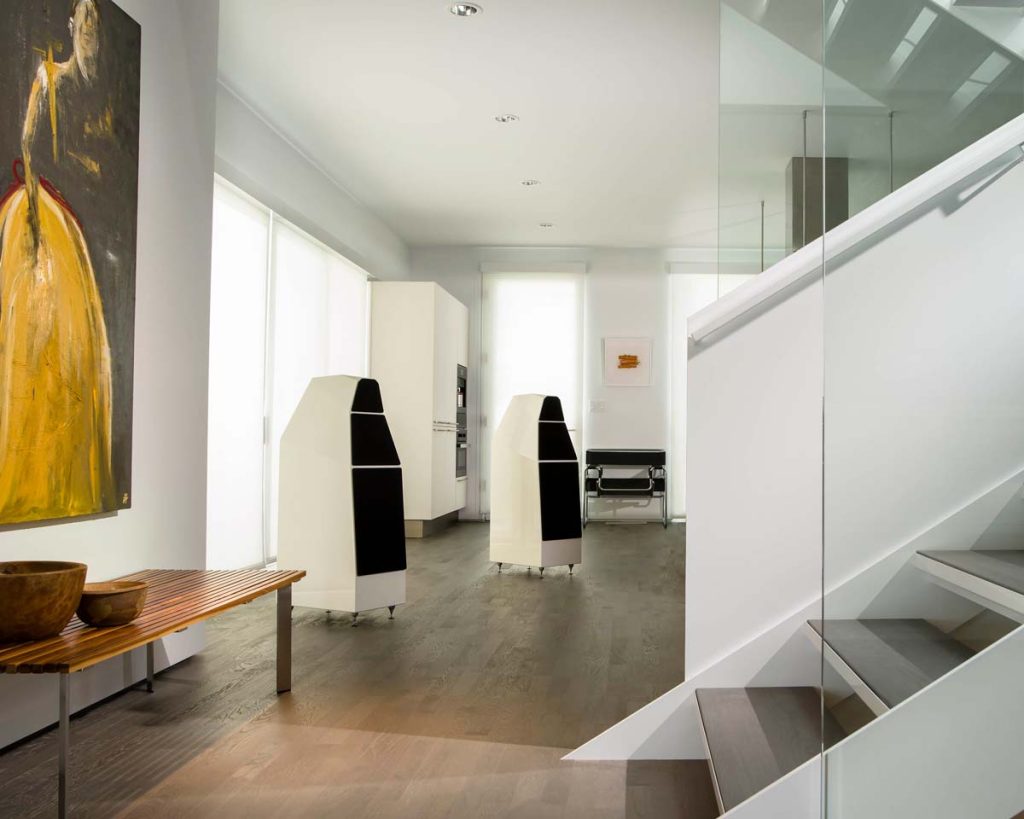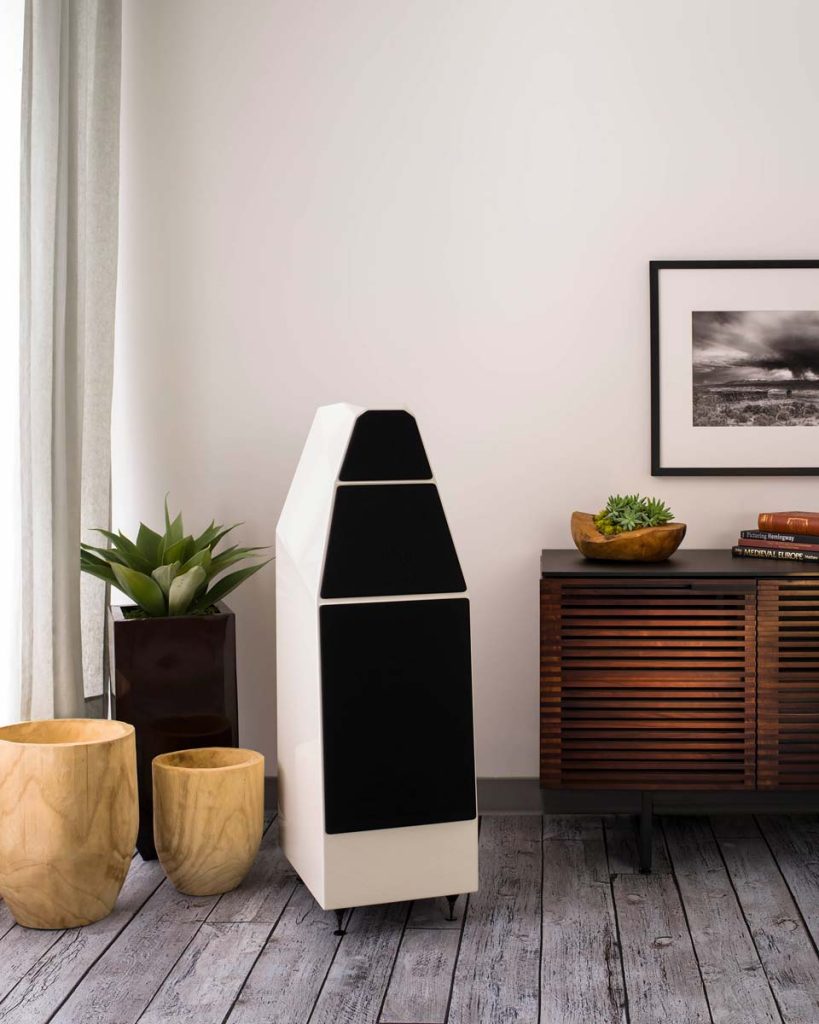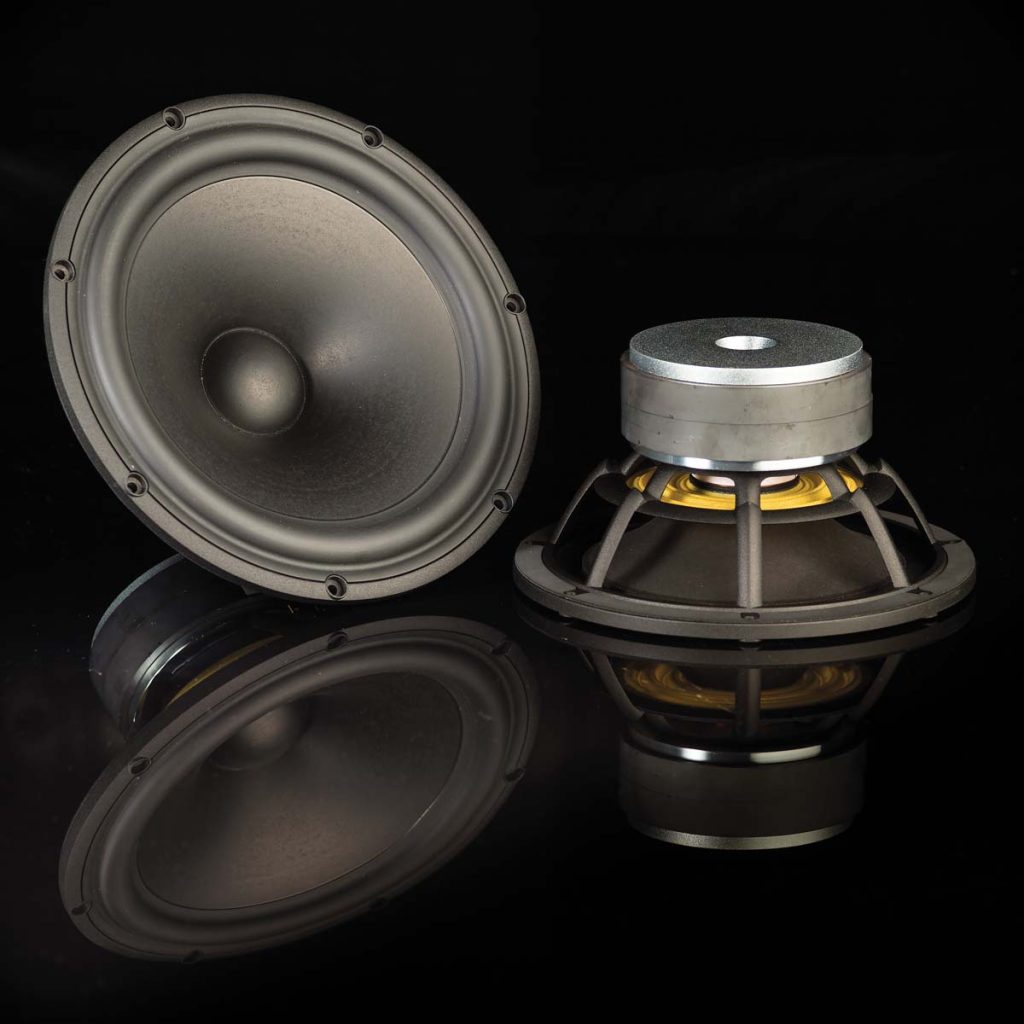Beloved Music Machine
It’s great to see that some people still have an unswerving drive to achieve perfection. It’s even better when you can hear it as well.
I have a small confession to make from the start: Around 25 years ago, I visited two hi-fi shows in quick succession that didn’t exactly go so well for everyone involved. It was the first time I would come across two Wilson Audio models. Yet nothing would come of us, the German hobby rock ’n’ roller in love with all things from Great Britain, and the US speakers from David Wilson, a guy on a fanatical quest to achieve acoustic truth. I quickly dismissed Wilson Audio as “pretentious” and “inappropriately ambitious.” Even after I had met the love of my life and also philandered with “classical music” in the broader sense, Wilson Audio had still not attracted my audiophile attention. In hindsight, this is really strange; but I can’t change it now.
My personal interest was first aroused when my colleague Ingo Schulz pulled out a pair of WATT Puppy speakers from his collection and played them for me — in private and without all the hustle and bustle of a trade fair. And then it suddenly dawned on me that maybe I had missed out on some important moments in high-end audio history. I put Wilson Audio high up on my “must explore more closely!” list, but only got a chance to fulfill the self-imposed challenge in another three years. That was the day a gentleman named Peter McGrath presented the Alexia, a brand-new model at the time. I was swept off my feet not just on one account but two: the speaker’s sensationally impressive performance and the exquisite choice of music.
Shortly after that, Messrs. Schulz and Brockmann met the entire Wilson family at the Vienna State Opera (“Closer to the real thing,” FIDELITY No. 7, issue 4/2013). Besides all the astoundingly deep conversations we had, we were also really impressed with how clearly both Dave Wilson and his son Daryl understood music and music playback.
Daryl has since taken the reins from his father at Wilson Audio, and we’re pleased to see the company’s aspirations have not changed at all. At Wilson Audio, they remain steadfast in their quest to ensure no detail, however slight, slips through their fingers that could bring them a little bit closer to achieving live-concert sound quality. For that reason alone, the Wilsons visit concert halls all around the world, dip into a huge back catalog of self-made recordings, and attend to the tiniest of details when developing, producing, and even setting up speakers for a customer. It’s always all about the music; it’s that simple. Particularly well-produced music, I should add just to be fair. “The real thing” is not an MP3 file that’s been optimized for a laptop rather everything that’s been recorded and preserved by experts or has at least been produced to audiophile standards. For rough-edged rock and mediocre or poor music, please look elsewhere for ordinary “boxes.”
And so that finally brings us to the latest Wilson Audio model: My first impression of the Yvette, with its typical Wilson Audio stature, was clearly not of a “box.” And there’s nothing ordinary about the model at all. For example, the built-in, very familiar-looking drivers are specially manufactured for Wilson Audio according to their exact specifications. At Wilson Audio in Provo, Utah, they are then selected and compiled for even tighter tolerances, first in pairs then in the entire set with all other drivers. After that, they are coupled with super-fine-tuned and molded crossovers. Next, they are built into highly engineered, absolutely immaculately made, material-intensive, and maximally low-resonance housing. Then, as a finished manufactured product, each Yvette is expertly integrated into its new home by a trained Wilson Audio dealer. And there the new owner is mostly likely to be found waiting anxiously to get his or her hands on the speakers. After all, Wilson Audio doesn’t begin the manufacturing process until the company receives an order. There is no “off-the-rack” purchases at Wilson Audio.
The new pair of Yvettes fresh off the boat from the US make their new home in the FIDELITY listening room, where a gentleman named Peter McGrath has moved in as well. We’re very pleased to see each other again. The official Wilson Audio brand ambassador and former head of Harmonia Mundi USA is not only a renowned music expert and much sought-after sound engineer, but also the expert for the ideal installation of Wilson Audio products in given spaces.
In the listening room, large furniture glides are placed under the spikes, which are supplied as standard, to help ensure the elephantine loudspeakers can at least be moved. The 80-kilo boulders perched on them can be pushed centimeter by centimeter back and forth until the optimum position has been found. McGrath notes the positions of each loudspeaker in the room with the help of a calibration sheet; then, using very well-known test tracks, he rates the speakers’ performance in seven individual disciplines. It’s pretty obvious, incidentally, that these are the musical criteria of a trained sound engineer’s ear — low bass expansion, fundamental tone quality, spatial impressions (soundstage center focus and ambient bloom), tonal balance, dynamic impression, and musical flow… this has to be the most music-oriented as well as the most professional and accurate approach for obtaining the best possible results from a loudspeaker located in unfamiliar surroundings. McGrath actually estimated it would take a whopping 1.5 days (!) to situate the Yvette in the FIDELITY listening room. A big pile of CDs and the sound engineer’s digital recorder with its own high-res recordings lie there ready to go. Yet after three hours of “critical listening and fiddling,” McGrath is visibly pleased with the resulting sound and asks us to “inspect and approve” his work in the listening room. A closer look at the tape measures still lying about tells me the sound expert has declared the mathematically determined second-best total on the calibration sheet as the favorite sound. “Well, it’s the overall performance that counts,” McGrath says as he starts the first track on the Wilson Audio Yvette set up in the FIDELITY listening room.
It’s a good thing I’m sitting down, otherwise I’d have been knocked off my feet. I can clearly and distinctly “see” the “living and breathing” recording room all around me, even before an instrument has uttered a peep. The Yvette instantly conveys a sense of magnitude and volume. And after the first few beats of Holst’s The Planets, I am secretly in love. Not with the most beautiful looking loudspeakers in the world and not with the most expensive speakers of all time, and not with the deal of the century, but with an inexplicably well-balanced piece of “sound furniture.” Yvette and I fall for each other at the skip of a heartbeat.
Maybe because the lady is so stable, consistent, and pleasant? Yvette is the largest single-enclosure loudspeaker that Wilson Audio makes; as a result, there’s no option to adjust it as there is with the company’s larger models. Their separate mid and treble modules can be meticulously adjusted to achieve the right phase-related (time-coherent) emission of all chassis for a specific listening position. The mechanically invariable one-body design of the Yvette does, however, mean the speakers need to be a particular distance from the listening position — in this case approximately 2.75 meters at an ear height of between 96 and 102 centimeters. They work perfectly, for example, in the 33-square-meter FIDELITY listening room.
In terms of its shape, the Yvette is the successor to the Sophia. The Yvette, however, features significant technical improvements that Wilson Audio has also added to recent larger models — models whose designs Daryl Wilson has been contributing to since 2002, by the way. The Yvette naturally also benefits from the knowledge that resulted from developing the preeminent flagship WAMM Master Chronosonic (see FIDELITY No. 30, issue 2/2017). The most outstanding part of all this high-precision work is not visible, but rather an integral component of one large overall concept that manifests itself in the Yvette’s amazingly low-resonance housing. As already stated, it’s not spectacular components or super-high-tech drivers (alone) that make the difference in terms of good or bad performance, but the best possible coordinated and integrative interplay among all components to produce the most time-coherent sound emission. My colleagues who are listening with me can also hear it now. We each take our turn in the sweet spot and are rewarded with an overwhelmingly all-encompassing impression of acoustic holography.
That evening I get some alone time with Yvette. Now is my chance to take my time and delight her with the only symphony written by Erich Wolfgang Korngold (Chandos 9171), one of my all-time favorite works scored for a large orchestra. The recording was made in 1993 in the concert hall of New Broadcasting House, Manchester, with the BBC Philharmonic under the direction of Sir Edward Downes. Within just a few seconds, the loudspeaker whisks me off into the wonderful world of skilfully arranged dissonances and arcs of suspense, and effortlessly transports the rather well-manned orchestra into the listening room — even exceeding beyond the boundary of the walls with ease. The three-dimensional impression is simply mind-blowing! I am completely immersed in the music. The Yvette transmits the dynamic outbursts and eruptions from the beefed-up percussion section into the room with unbridled fervor. Thunderous and threatening, the bass notes are not just simply “there” but take on a discernible shape and contour; and when the perhaps most beautiful key changes to grace recent musical history unfold, tears welled up in my eyes — what a fantastic music emissary Yvette is! Good job, Peter, Dave, and Daryl. Even better job, Yvette. And thank you all, Erich Wolfgang Korngold, Frank Zappa, Oscar Peterson, Malia, Marc-André Hamelin, Pink Floyd, Ella Fitzgerald, David Crosby, Yello, …
And rather than thank, I’m going to complain about Beth Hart, Motörhead, and ZZ Top, to name just a few, for issuing seriously mediocre productions. Oh, and don’t let me forget to mention AC/DC, too (except for Ballbreaker, which is really good). Thanks to my new friend, Yvette, I now know very well where, in technical recording terms, things got snagged and stuck and where things got simply really sloppy. The same goes for all hardware players, from the source to selection of the amplifier (these Amplifon tube monos!) to all cables with supporting accessories: a fantastic tool for music lovers and audiophiles! And don’t think the Yvette, which, by Wilson Audio standards, is considered compact, is in any way compact when it comes to sound — quite the opposite in fact!
Thankfully, the Yvette not only has an insane broad band (including low bass!), but also boasts such seamless and homogeneous performance there is enough to discover even with poor recordings. However, the Yvette demonstrates its true purpose with superbly produced works. This is when Wilson Audio’s biggest single-enclosure loudspeaker really comes into its own, and you to forget time and space. And the price for the pair, too: When a hi-fi component manages to completely let itself go in the music and take its listeners with it, that component can demand practically whatever it likes. Attention for example, and respect.
Listening To Yvette
Commentary from Hans von Draminski
“Perfection is not achieved when there is nothing more to add, but when there is nothing left to take away.” These were not the words of a hifi engineer or a loudspeaker developer but the French writer, philosopher, and pioneering aviator Antoine Marie Jean-Baptiste Roger Vicomte de Saint-Exupéry (1900–1944). The contemplative author, who blessed us with such works as The Little Prince, also added that a machine is inconspicuous in its greatest form. This idea really rings true with the Wilson Audio Yvette.
No, this is not a mini-loudspeaker or a wall panel speaker. These streamlined sculptures transform into inconspicuous workhorses when the music starts to play — in no time you forget that loudspeakers are at work here, busy playing back a saved recording. From the orchestra’s very first note, from the very first pressing of a key, from the very first pianissimo aspirated D in the bass range, the Wilson Audio Yvette grows invisible, dematerializes, simply disappears and just lets the music flow unhindered. It manages to do this best with sound events that have been produced naturally, whether in classical pieces, jazz numbers, or sudden flashes of vocal genius by singers and songwriters.
If you sit with Peter McGrath on the couch, then such materials are in no short supply. After all, during his lifetime this highly talented sound engineer has created and/or been responsible for some very noteworthy recordings, mainly in the classical sector. It’s only logical that someone like him should work for Wilson Audio: McGrath is also a fan of puristic configurations, especially when it comes to recording music. No multiple microphone setups, but rather pared-back, simple configurations where the sound expert McGrath always ensures a balanced proportion of the room where the recording took place comes with him. To showcase “his” loudspeakers properly, McGrath has a few “work samples” (sadly not freely available on the market) saved on the SSD of a very handy hard-disc recorder that he modified himself: On it, a small church choir sings Bach — their voices youthful and unspent, and the church almost the perfect setting for the vocal ensemble that partly consists of soloists. McGrath’s recording, played back using the test Yvette in the FIDELITY listening room, allows you to actually pinpoint each singer in the room. And they don’t drift when the pitch changes (which is a problem of many, even very good, multiway systems).
McGrath has an unmistakable soft spot for the exceptional, for musical excursions into realms beyond the norm. The genre of the male alto, sometimes also referred to as a countertenor or alto (with different timbre and pitch range), has now also become well-known on this side of the early-music scene because of crossover experts such as Andreas Scholl. The high-resolution file that lies slumbering on McGrath’s hard disk seriously ratchets things up another notch: A male soprano voice serves up early Baroque arias with wonderful subtlety and sense of timing and phrasing. With a comparatively dry recording, the Wilson Audio Yvette not only delivers a fully untainted voice profile, but enhances the audio picture with so many details that trained listeners would never think for a second that a woman was singing.
In the days and weeks following McGrath’s visit, many silver and black disks grace player spindles and turntables. The Wilson Audio Yvette always stays well away from any musical happenings and demonstrates perfection in the sense depicted by Saint-Exupéry: It produces absolutely no sound of its own because the straight and narrow is what is called for here, not razzle-dazzle. Whatever is on the vinyl, CD, or file is reproduced unfiltered and unadorned. The Finnish composer Jean Sibelius once promised to pour clear spring water at a time when other colorful music cocktails were being mixed. The Wilson Audio Yvette takes a similar puristic approach but without behaving like a Spartan. Here, the color palette of tones is, for example, a luminous rainbow, but one that hasn’t had its color intensity subsequently accentuated in the image editing process. In the virtual creation of real-seeming rooms, the high priority that perfectly timed playback enjoys with the Wilson becomes apparent. Precisely calculated phantom acoustic sources — a singer at the altar of a tiny chapel, a double bass directly next to the jazz club wall — are given so much energy that they start to shine from the inside out, so to speak.
If something went wrong when the microphones were being set up, if the sound engineering team was still not really able to handle the specific features of a recording location, the Wilson Audio Yvette will convey this to listeners without annoying them more than necessary. With the “First Recording” from the new Hamburg Elbphilharmonie, even the Yvettes are unable to conjure up any three-dimensionality or reasonable depth gradation from the NDR Orchestra. For this they recount a story of rhythmic stringency and clear accentuation. An imaginary concert film that also remains sharp on the edges and doesn’t flicker.
A large part of the Wilson fascination is that this loudspeaker gets on best with music for which it was not primarily intended. An amused and grinning McGrath puts on the album Convergence from Malawian-British jazz and soul singer Malia, which she recorded with sound enthusiast and electronic guru Boris Blank known for his work in the musical duo Yello. Here there is an overdose of what’s a litmus test for any loudspeaker: a complex and versatile female voice full of nuances coupled with stone-cold computer beats. The Wilsons transform into fiery groove machines with this superb studio album, make the very stable listening room floor vibrate, and, from a level that your ears don’t find excessive, make the doors and window panes rattle. Only when FIDELITY colleagues glance into the listening room with very annoyed looks on their faces does it become clear just how very loud the music has been that the two gentlemen on the couch have been listening to. The fact that the Wilson Audio Yvette functions without any distortion or limitations even at levels way above the threshold conducive for hearing tells you that this is a world-class design.
Especially as it also masters the complete opposite. Sometimes, you want to listen to a bit of music at night and treat your ears, for example, to a bit of Gustav Mahler’s Symphony No. 10 recorded by Wergo. The Israeli-American composer and conductor Yoel Gamzou took the unfinished piece and in 2010, then just 22 years old, recorded a reconstructed version with the International Mahler Orchestra that he founded. It’s a version with massive input from the wind section and opulent string passages, one that demonstrates pioneering spirit and a touch of nonconformity. Gamzou’s dense intertwined mesh of leitmotif correspondences, his wide dynamic arcs, and his confident buildup of tension “work” on the Wilson Audio Yvette even at room volume and slightly below because this furious exceptional loudspeaker never loses balance even at low levels, and it never forfeits its stringency or ventures off the straight and narrow. It is free from dead weight and therefore perfect. At least for all intents and purposes. After all, Yvette has a pair of big siblings, whom I would also like to hear — as a friend of the family, let’s say…
Accompanying Equipment
Turntables: AMG Viella V12, Clearaudio Innovation, EnVogue Astra | Tonearms: AMG JT12 Turbo, Clearaudio TT-II and Universal, Nottingham Analogue AnnaArm 12″ | Pickups: Clearaudio DaVinci, DS Audio Master 1, EMT JSD S75 | MC system: Audio Note S2 | Phono stages: Clearaudio Absolute Phono, DS Audio Master 1 EQ, Synthesis Roma 79DC | Digital players: Audio Note CDT-3/DAC 3, T+A PDP 3000 HV | Preamplifiers: Primare Pre60, Soulution 560, Tidal Preos | Power amplifiers: Amplifon SET 140, Audia Flight FLS4, Musical Fidelity M8 500s, Primare A60, Soulution 511 | Integrated amplifier: T+A PA 3100 HV | Cables: AudioQuest, Audio Note, HMS, Refine Audio, Vovox | Power conditioning: IsoTek, Gecom | Accessories, mounting surfaces, and furniture: various products from Subbase Audio and Harmonix, LignoLab TT100, and “Die Bank” (“The Bench”), Solidsteel HS Series
Loudspeaker
Wilson Audio Yvette
Functional principle: three-way floorstanding loudspeaker, bass reflex | Efficiency: 86 dB | Nominal impedance: 4 Ω | Equipment: 1 x 25-cm woofer, 1 x 18-cm midrange, 1 x 25-mm dome tweeter | Special features: Extremely low-resonance housing made of Wilson Audio X-Material and S-Material; vented midrange enclosure, tunable crossover, time-coherent emission | Finishes: Various colors and high-gloss varnishes, also according to customer’s wishes | Dimensions (W/H/D): 34/110/51 cm | Weight: 80 kg | Warranty period: five years | Price per pair: €31,000

